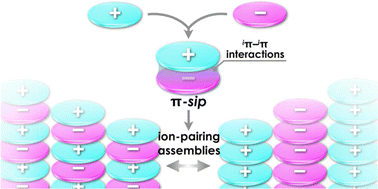Chem. Soc. Rev., 2023, Advance Article
DOI: 10.1039/D3CS00581J, Review Article
DOI: 10.1039/D3CS00581J, Review Article
 Open Access
Open Access This article is licensed under a Creative Commons Attribution-NonCommercial 3.0 Unported Licence.
This article is licensed under a Creative Commons Attribution-NonCommercial 3.0 Unported Licence.Yohei Haketa, Kazuhisa Yamasumi, Hiromitsu Maeda
Ion pairs comprising π-electronic cations and anions, formed via iπ–iπ interactions with synergetically worked electrostatic and dispersion forces, and their properties for potential applications as functional materials are summarized.
To cite this article before page numbers are assigned, use the DOI form of citation above.
The content of this RSS Feed (c) The Royal Society of Chemistry
Ion pairs comprising π-electronic cations and anions, formed via iπ–iπ interactions with synergetically worked electrostatic and dispersion forces, and their properties for potential applications as functional materials are summarized.
To cite this article before page numbers are assigned, use the DOI form of citation above.
The content of this RSS Feed (c) The Royal Society of Chemistry

